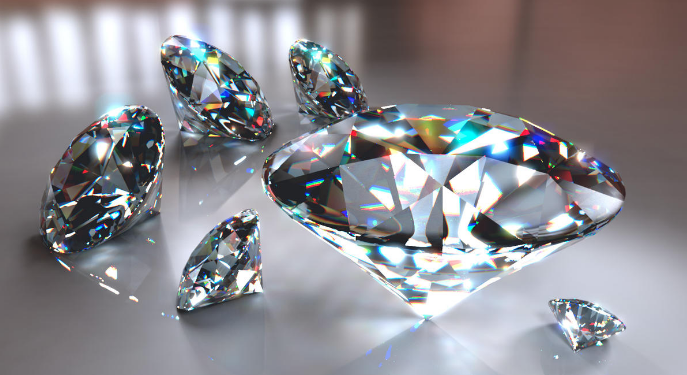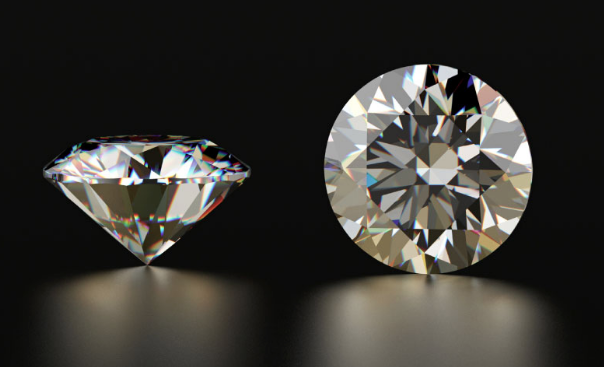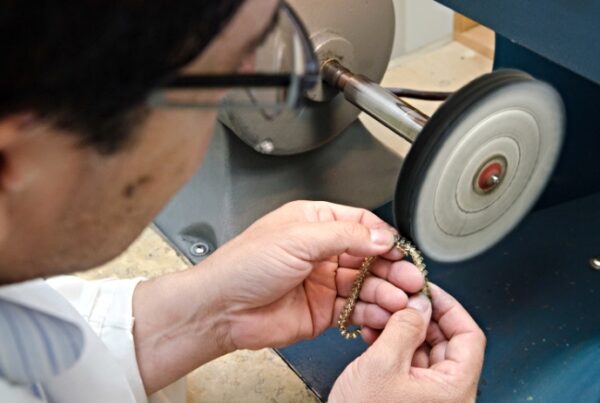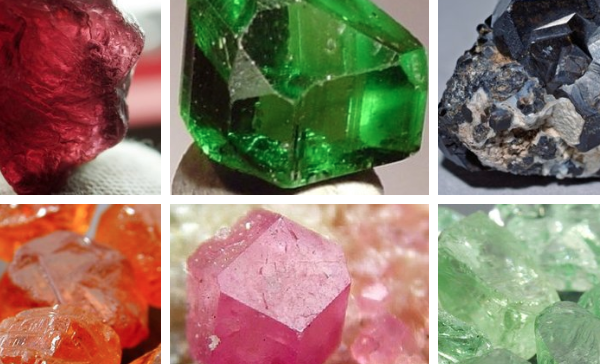Birthstones are always considered special gems, but April’s birthstone is exceptional. April’s gem is the brilliant diamond. Diamond is also the anniversary gem for the 10th and 60th wedding anniversary years. As the April gemstone, the diamond is recognized as the King of Gemstones. Here are some interesting FAQ that you might not know about this exceptional gemstone.
The fire and sparkle of the diamond have been prized for centuries, although the early history of the diamond is unknown. Some historians estimate that diamonds were traded as early as 400 BC. Major diamond trading business occurred in Europe in the Middle Ages, as well as during the Renaissance. There is significant research dating back to 1330 AD showing diamond cutting in Venice. The diamond trading business flourished towards the 15th century with the opening of Eastern trade routes. There is Medieval Islamic jewelry that is dated back to the 13th century.
Diamonds first gained popularity in India. Ancient Sanskrit texts tell about the extraordinary value and significance of diamonds. In Sanskrit, the diamond is called “vajra,” which also means lightning; in Hindu mythology, “vajra” was the weapon of Indra, the king of gods.
But before it was known that diamonds are formed under pressure under the earth, many ancient civilizations believed that diamonds were made by lightning bolts hitting the earth and becoming solid. Another belief asserted that diamonds were formed the tears of God.
One of the reasons natural diamonds are so admired and valued is not only because of the brilliance and fire of the gem, but also because of how they are formed under extreme pressure deep below the earth’s crust.
Each natural diamond is unique. When a diamond is graded by a certified gemological institute, a special map is made showing each diamond’s special qualities. Grading also ranks a diamond according to color, cut, clarity, and color – known as the Four Cs. These qualities, taken together, determine the value of each individual diamond.
Thought to be one of the hardest substances on the globe, diamonds date back billions of years. It is the hardest gemstone and made of just one element: carbon. Only another diamond is strong enough to cut a diamond.
In 1912, the American National Association of Jewelers designed a list dedicating different gems to various months. Diamond was selected for the month of April.
Until the diamond cartel DeBeers and Company launched its iconic “Diamonds are Forever” advertising campaign in 1938, diamonds were not popular for engagement and wedding rings. Now they are the most popular gem for wedding jewelry.
Diamonds are available in several different hues in addition to clear – red, yellow, pink, green and blue. They are available in a variety of shades such as faint to vivid. The most expensive diamonds are those that sparkle with intensity and are bright and colorful.
Adopted from the Greek word “adamas”, meaning “invincible,” diamonds come in a wide range of colors such as black, blue, green, pink, red, purple, orange and yellow. The color is dependent upon the type of impurities that are present in the stone. For instance, yellow stones have minuscule traces of nitrogen while blue ones contain boron.
Natural diamonds sparkling with intense color are rare and may be priced higher than a colorless diamond of equal size. Colored diamonds are called “fancy” colored. Because fancy color diamonds are very desirable, color is sometimes introduced in a laboratory. These are correctly called color-treated diamonds.
Diamonds have often been associated with great healing powers. Many thought the diamond could cure brain disease, alleviate pituitary gland disorders and draw toxins from the blood.
During the Middle Ages, diamonds were thought to hold healing powers and to cure ailments stemming from the pituitary gland and brain. By heating the crystal and taking it to bed, it was thought to draw out the harmful toxins that were crippling the body.
Throughout history, the diamond has nearly always symbolized eternal and lasting love and attributed with the ability to bring courage. Wearing the April birthstone is said to make the wearers happier in their relationships, more successful at work, and help them build strength from within. Diamonds are associated with other benefits such as mental clarity, balance, and prosperity.
Diamonds were highly prized for rings by the Romans. A few rings containing uncut diamonds have survived and are now in the collection of The British Museum. Pliny writes about diamonds in his Naturalis Historia calling them “The substance that possesses the greatest value, not only among the precious stones, but of all human possessions.”
After the decline of the Roman empire diamonds disappeared from European jewelry altogether. India was the only source of diamonds until the 18th century, but the supply chain to Western Europe was stymied by the lack of Roman merchants.
The spread of Christianity condemned the superstitious attributes which had accompanied the stones, and the diamond lost its popularity in the European world. Contrary to the European situation, the gem retailed its popularity in the Indian and Islamic worlds.
As a birthstone or anniversary gem, the diamond is exceptional. The beauty of this unique gem, however, makes it the most popular gem throughout the world. We hope you have enjoyed learning about the exquisite diamond.
We carry a full collection of mounted and loose diamonds at our store at 11219 South Dixie Highway, Miami, FL 33156. There is plenty of free parking, and we have a private diamond viewing room for your convenience. Have questions? Just give us a call at (305) 252-1123.




